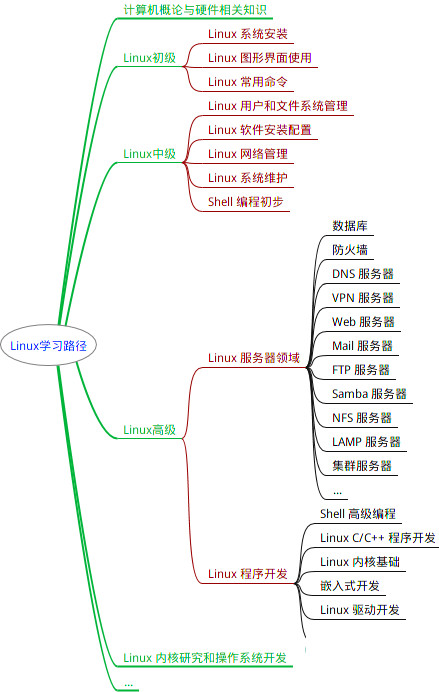class Inception_ResNet_B(nn.Module):
def __init__(self, input):
super(Inception_ResNet_B, self).__init__()
self.conv1 = conv1x1(in_planes =input,out_channels=128,stride=1, padding=0)
self.conv1x7 = nn.Conv2d(in_channels=128,out_channels=128,kernel_size=(1,7), padding=(0,3))
self.conv7x1 = nn.Conv2d(in_channels=128, out_channels=128,kernel_size=(7,1), padding=(3,0))
self.line = nn.Conv2d(256, 896, 1, stride=1, padding=0, bias=True)
self.relu = nn.ReLU()
def forward(self, x):
c1 = self.conv1(x)
# print("c1",c1.shape)
c2 = self.conv1(x)
# print("c2", c2.shape)
c2_1 = self.conv1x7(c2)
# print("c2_1", c2_1.shape)
c2_1 = self.relu(c2_1)
c2_2 = self.conv7x1(c2_1)
# print("c2_2", c2_2.shape)
c2_2 = self.relu(c2_2)
cat = torch.cat([c1, c2_2], dim=1)
line = self.line(cat)
out =x+line
out = self.relu(out)
# print("out", out.shape)
return out
Reduction-B模块:输入17*17*896,输出8*8*1792.
class Reduction_B(nn.Module):
def __init__(self, input):
super(Reduction_B, self).__init__()
self.maxpool = nn.MaxPool2d(kernel_size=3, stride=2, padding=1)
self.conv1 = conv1x1(in_planes=input, out_channels=256, padding=1)
self.conv2 = conv3x3(in_planes=256, out_channels=384, stride=2, padding=0)
self.conv3 = conv3x3(in_planes=256, out_channels=256,stride=2, padding=0)
self.conv4 = conv3x3(in_planes=256, out_channels=256, padding=1)
self.conv5 = conv3x3(in_planes=256, out_channels=256, stride=2, padding=0)
def forward(self, x):
c1 = self.maxpool(x)
# print("c1", c1.shape)
c2 = self.conv1(x)
# print("c2", c2.shape)
c3 = self.conv1(x)
# print("c3", c3.shape)
c4 = self.conv1(x)
# print("c4", c4.shape)
c2_1 = self.conv2(c2)
# print("cc2_1", c2_1.shape)
c3_1 = self.conv3(c3)
# print("c3_1", c3_1.shape)
c4_1 = self.conv4(c4)
# print("c4_1", c4_1.shape)
c4_2 = self.conv5(c4_1)
# print("c4_2", c4_2.shape)
cat = torch.cat([c1, c2_1, c3_1,c4_2], dim=1)
# print("cat", cat.shape)
return cat
IR-C模块*5:输入8*8*1792,输出8*8*1792.
class Inception_ResNet_C(nn.Module):
def __init__(self, input):
super(Inception_ResNet_C, self).__init__()
self.conv1 = conv1x1(in_planes=input, out_channels=192, stride=1, padding=0)
self.conv1x3 = nn.Conv2d(in_channels=192, out_channels=192, kernel_size=(1, 3), padding=(0,1))
self.conv3x1 = nn.Conv2d(in_channels=192, out_channels=192, kernel_size=(3, 1), padding=(1,0))
self.line = nn.Conv2d(384, 1792, 1, stride=1, padding=0, bias=True)
self.relu = nn.ReLU()
def forward(self, x):
c1 = self.conv1(x)
# print("x", x.shape)
# print("c1",c1.shape)
c2 = self.conv1(x)
# print("c2", c2.shape)
c2_1 = self.conv1x3(c2)
# print("c2_1", c2_1.shape)
c2_1 = self.relu(c2_1)
c2_2 = self.conv3x1(c2_1)
# print("c2_2", c2_2.shape)
c2_2 = self.relu(c2_2)
cat = torch.cat([c1, c2_2], dim=1)
# print("cat", cat.shape)
line = self.line(cat)
out = x+ line
# print("out", out.shape)
out = self.relu(out)
return out
class Inception_ResNet(nn.Module):
def __init__(self,classes=2):
super(Inception_ResNet, self).__init__()
blocks = []
blocks.append(StemV1(in_planes=3))
for i in range(5):
blocks.append(Inception_ResNet_A(input=256))
blocks.append(Reduction_A(input=256))
for i in range(10):
blocks.append(Inception_ResNet_B(input=896))
blocks.append(Reduction_B(input=896))
for i in range(10):
blocks.append(Inception_ResNet_C(input=1792))
self.features = nn.Sequential(*blocks)
self.avepool = nn.AvgPool2d(kernel_size=3)
self.dropout = nn.Dropout(p=0.2)
self.linear = nn.Linear(1792, classes)
def forward(self,x):
x = self.features(x)
# print("x",x.shape)
x = self.avepool(x)
# print("avepool", x.shape)
x = self.dropout(x)
# print("dropout", x.shape)
x = x.view(x.size(0), -1)
x = self.linear(x)
return x
上述代码参考:基于PyTorch实现 Inception-ResNet-v1_NAND_LU的博客-CSDN博客
(2)Inception-Resnet-v2:
import torch
import torch.nn as nn
import torch.nn.functional as F
# 由于后面会经常用到,提前定义3×3卷积 和 1×1的卷积
class conv3x3(nn.Module):
def __init__(self, in_planes, out_channels, stride=1, padding=0):
super(conv3x3, self).__init__()
self.conv3x3 = nn.Sequential(
nn.Conv2d(in_planes, out_channels, kernel_size=3, stride=stride, padding=padding), # 卷积核为3x3
nn.BatchNorm2d(out_channels), # BN层,防止过拟合以及梯度爆炸
nn.ReLU() # 激活函数
)
def forward(self, input):
return self.conv3x3(input)
class conv1x1(nn.Module):
def __init__(self, in_planes, out_channels, stride=1, padding=0):
super(conv1x1, self).__init__()
self.conv1x1 = nn.Sequential(
nn.Conv2d(in_planes, out_channels, kernel_size=1, stride=stride, padding=padding), # 卷积核为1x1
nn.BatchNorm2d(out_channels),
nn.ReLU()
)
def forward(self, input):
return self.conv1x1(input)
stem模块:输入299*299*3,输出35*35*384.
# 定义stem模块
class StemV2(nn.Module):
def __init__(self, in_planes=3):
super(StemV2, self).__init__()
self.conv1 = conv3x3(in_planes =in_planes,out_channels=32,stride=2, padding=0)
self.conv2 = conv3x3(in_planes=32, out_channels=32, stride=1, padding=0)
self.conv3 = conv3x3(in_planes=32, out_channels=64, stride=1, padding=1)
self.maxpool1 = nn.MaxPool2d(kernel_size=3, stride=2, padding=0)
self.conv4 = conv3x3(in_planes=64, out_channels=96, stride=2, padding=0)
self.conv5 = conv1x1(in_planes=160, out_channels=64, stride=1, padding=1)
self.conv6 = conv3x3(in_planes=64, out_channels=96, stride=1, padding=0)
self.conv7 = conv1x1(in_planes=160, out_channels=64, stride=1, padding=1)
self.conv8 = nn.Conv2d(in_channels=64, out_channels=64, stride=1, kernel_size=(1, 7), padding=(0, 3))
self.conv9 = nn.Conv2d(in_channels=64, out_channels=64, stride=1, kernel_size=(7, 1), padding=(3, 0))
self.conv10 = conv3x3(in_planes=64, out_channels=96, stride=1, padding=0)
self.conv11 = conv3x3(in_planes=192, out_channels=192, stride=2, padding=0)
self.maxpool2 = nn.MaxPool2d(kernel_size=3, stride=2, padding=0)
self.relu = nn.ReLU()
def forward(self, x):
x = self.conv1(x)
x = self.conv2(x)
x = self.conv3(x)
x1 = self.maxpool1(x)
x2 = self.conv4(x)
x = torch.cat([x1, x2], dim=1)
x1 = self.conv5(x)
x1 = self.conv6(x1)
x2 = self.conv7(x)
x2 = self.conv8(x2)
x2 = self.relu(x2)
x2 = self.conv9(x2)
x2 = self.relu(x2)
x2 = self.conv10(x2)
x = torch.cat([x1, x2], dim=1)
x1 = self.conv11(x)
x2 = self.maxpool2(x)
x = torch.cat([x1, x2], dim=1)
return x
IR-A模块*5:输入35*35*384,输出35*35*256.
# 定义IR-A模块
class Inception_ResNet_A(nn.Module):
def __init__(self, input, scale=0.3):
super(Inception_ResNet_A, self).__init__()
self.conv1 = conv1x1(in_planes =input,out_channels=32,stride=1, padding=0)
self.conv2 = conv3x3(in_planes=32, out_channels=32, stride=1, padding=1)
self.conv3 = conv3x3(in_planes=32, out_channels=48, stride=1, padding=1)
self.conv4 = conv3x3(in_planes=48, out_channels=64, stride=1, padding=1)
self.line = nn.Conv2d(128, 384, 1, stride=1, padding=0, bias=True)
self.scale = scale
self.relu = nn.ReLU()
def forward(self, x):
c1 = self.conv1(x)
# print("c1",c1.shape)
c2 = self.conv1(x)
# print("c2", c2.shape)
c3 = self.conv1(x)
# print("c3", c3.shape)
c2_1 = self.conv2(c2)
# print("c2_1", c2_1.shape)
c3_1 = self.conv3(c3)
# print("c3_1", c3_1.shape)
c3_2 = self.conv4(c3_1)
# print("c3_2", c3_2.shape)
cat = torch.cat([c1, c2_1, c3_2],dim=1)#torch.Size([4, 96, 15, 15])
# print("x",x.shape)
line = self.line(cat)
# print("line",line.shape)
out = self.scale*x+line
out = self.relu(out)
return out
Reduction-A模块:输入35*35*256,输出17*17*896.
# 定义Reduction-A模块
class Reduction_A(nn.Module):
def __init__(self, input, n=384, k=256, l=256, m=384, scale=0.3):
super(Reduction_A, self).__init__()
self.maxpool = nn.MaxPool2d(kernel_size=3, stride=2, padding=0)
self.conv1 = conv3x3(in_planes=input, out_channels=n, stride=2,padding=0)
self.conv2 = conv1x1(in_planes=input, out_channels=k, padding=1)
self.conv3 = conv3x3(in_planes=k, out_channels=l, padding=0)
self.conv4 = conv3x3(in_planes=l, out_channels=m, stride=2, padding=0)
self.scale =scale
def forward(self, x):
c1 = self.maxpool(x)
# print("c1",c1.shape)
c2 = self.conv1(x)
# print("c2", c2.shape)
c3 = self.conv2(x)
# print("c3", c3.shape)
c3_1 = self.conv3(c3)
# print("c3_1", c3_1.shape)
c3_2 = self.conv4(c3_1)
# print("c3_2", c3_2.shape)
cat = torch.cat([c1, c2, c3_2], dim=1)
return cat
IR-B模块*10:输入17*17*896,输出8*8*1792.
# 定义IR-B模块
class Inception_ResNet_B(nn.Module):
def __init__(self, input, scale=0.3):
super(Inception_ResNet_B, self).__init__()
self.conv1 = conv1x1(in_planes =input,out_channels=192,stride=0, padding=1)
self.conv2 = conv1x1(in_planes =input,out_channels=128,stride=0, padding=1)
self.conv1x7 = nn.Conv2d(in_channels=128,out_channels=160,kernel_size=(1,7), padding=(0,3))
self.conv7x1 = nn.Conv2d(in_channels=160, out_channels=192,kernel_size=(7,1), padding=(3,0))
self.line = nn.Conv2d(384, 1152, 1, stride=1, padding=0, bias=True)
self.scale = scale
self.relu = nn.ReLU()
def forward(self, x):
c1 = self.conv1(x)
# print("c1",c1.shape)
c2 = self.conv2(x)
# print("c2", c2.shape)
c2_1 = self.conv1x7(c2)
# print("c2_1", c2_1.shape)
c2_1 = self.relu(c2_1)
c2_2 = self.conv7x1(c2_1)
# print("c2_2", c2_2.shape)
c2_2 = self.relu(c2_2)
cat = torch.cat([c1, c2_2], dim=1)
line = self.line(cat)
out =self.scale*x+line
out = self.relu(out)
# print("out", out.shape)
return out
Reduction-B模块:输入8*8*1792,输出8*8*1792.
# 定义Reduction-B模块
class Reduction_B(nn.Module):
def __init__(self, input):
super(Reduction_B, self).__init__()
self.maxpool = nn.MaxPool2d(kernel_size=3, stride=2, padding=0)
self.conv1 = conv1x1(in_planes=input, out_channels=256, padding=1)
self.conv2 = conv3x3(in_planes=256, out_channels=288, stride=2, padding=0)
self.conv3 = conv3x3(in_planes=256, out_channels=288, stride=2, padding=0)
self.conv4 = conv3x3(in_planes=256, out_channels=288, padding=1)
self.conv5 = conv3x3(in_planes=288, out_channels=320, stride=2, padding=0)
def forward(self, x):
c1 = self.maxpool(x)
# print("c1", c1.shape)
c2 = self.conv1(x)
# print("c2", c2.shape)
c3 = self.conv1(x)
# print("c3", c3.shape)
c4 = self.conv1(x)
# print("c4", c4.shape)
c2_1 = self.conv2(c2)
# print("cc2_1", c2_1.shape)
c3_1 = self.conv3(c3)
# print("c3_1", c3_1.shape)
c4_1 = self.conv4(c4)
# print("c4_1", c4_1.shape)
c4_2 = self.conv5(c4_1)
# print("c4_2", c4_2.shape)
cat = torch.cat([c1, c2_1, c3_1, c4_2], dim=1)
# print("cat", cat.shape)
return cat
IR-C模块*5:输入8*8*1792,输出8*8*1792.
# 定义IR-C模块
class Inception_ResNet_C(nn.Module):
def __init__(self, input, scale=0.3):
super(Inception_ResNet_C, self).__init__()
self.conv1 = conv1x1(in_planes=input, out_channels=192, stride=1, padding=0)
self.conv1x3 = nn.Conv2d(in_channels=192, out_channels=224, kernel_size=(1, 3), padding=(0,1))
self.conv3x1 = nn.Conv2d(in_channels=224, out_channels=256, kernel_size=(3, 1), padding=(1,0))
self.line = nn.Conv2d(448, 2048, 1, stride=1, padding=0, bias=True)
self.relu = nn.ReLU()
self.scale = scale
def forward(self, x):
c1 = self.conv1(x)
# print("x", x.shape)
# print("c1",c1.shape)
c2 = self.conv1(x)
# print("c2", c2.shape)
c2_1 = self.conv1x3(c2)
# print("c2_1", c2_1.shape)
c2_1 = self.relu(c2_1)
c2_2 = self.conv3x1(c2_1)
# print("c2_2", c2_2.shape)
c2_2 = self.relu(c2_2)
cat = torch.cat([c1, c2_2], dim=1)
# print("cat", cat.shape)
line = self.line(cat)
out = self.scale*x+ line
# print("out", out.shape)
out = self.relu(out)
return out
# IR v2
class Inception_ResNet_v2(nn.Module):
def __init__(self, classes=2):
super(Inception_ResNet_v2, self).__init__()
blocks = []
blocks.append(StemV2(in_planes=3))
for _ in range(5):
blocks.append(Inception_ResNet_A(input=384))
blocks.append(Reduction_A(input=384))
for _ in range(10):
blocks.append(Inception_ResNet_B(input=1152))
blocks.append(Reduction_B(input=1152))
for _ in range(10):
blocks.append(Inception_ResNet_C(input=2146))
self.features = nn.Sequential(*blocks)

最全的Linux教程,Linux从入门到精通
======================
1. **linux从入门到精通(第2版)**
2. **Linux系统移植**
3. **Linux驱动开发入门与实战**
4. **LINUX 系统移植 第2版**
5. **Linux开源网络全栈详解 从DPDK到OpenFlow**

第一份《Linux从入门到精通》466页
====================
内容简介
====
本书是获得了很多读者好评的Linux经典畅销书**《Linux从入门到精通》的第2版**。本书第1版出版后曾经多次印刷,并被51CTO读书频道评为“最受读者喜爱的原创IT技术图书奖”。本书第﹖版以最新的Ubuntu 12.04为版本,循序渐进地向读者介绍了Linux 的基础应用、系统管理、网络应用、娱乐和办公、程序开发、服务器配置、系统安全等。本书附带1张光盘,内容为本书配套多媒体教学视频。另外,本书还为读者提供了大量的Linux学习资料和Ubuntu安装镜像文件,供读者免费下载。

**本书适合广大Linux初中级用户、开源软件爱好者和大专院校的学生阅读,同时也非常适合准备从事Linux平台开发的各类人员。**
> 需要《Linux入门到精通》、《linux系统移植》、《Linux驱动开发入门实战》、《Linux开源网络全栈》电子书籍及教程的工程师朋友们劳烦您转发+评论
**网上学习资料一大堆,但如果学到的知识不成体系,遇到问题时只是浅尝辄止,不再深入研究,那么很难做到真正的技术提升。**
**[需要这份系统化的资料的朋友,可以点击这里获取!](https://bbs.csdn.net/topics/618542503)**
**一个人可以走的很快,但一群人才能走的更远!不论你是正从事IT行业的老鸟或是对IT行业感兴趣的新人,都欢迎加入我们的的圈子(技术交流、学习资源、职场吐槽、大厂内推、面试辅导),让我们一起学习成长!**






















 379
379

 被折叠的 条评论
为什么被折叠?
被折叠的 条评论
为什么被折叠?








